
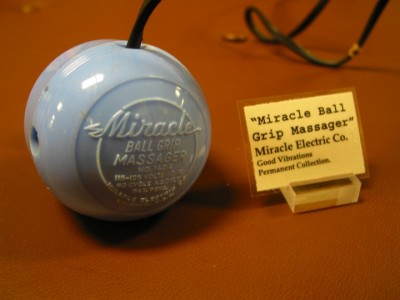
|
||||||
ver 1.7 - jul 28 06
"I had a farm in Africa" --- and from that opening line, from Out of Africa, you know that Isak Dinesen will lose that farm, tragedy will ensue, but a good story would unfold. So when I say "I had a gig writing a companion book to a TV series", it is both an homage to and echo of Dinesen --- and it's also like that moment in Maus where Art Spiegelman's father-stand-in says, "then my troubles really began". |
 |
 |
| The project was a coffee-table book on sex and technology, To create the book, I had to make big-picture editorial decisions predicated on what I hoped would be an okay compromise between market-prudence and writer-intuition. We all know that what you leave out is as important as what you put in, and that editing in the grandest sense is essential to the creation of anything. |
 |
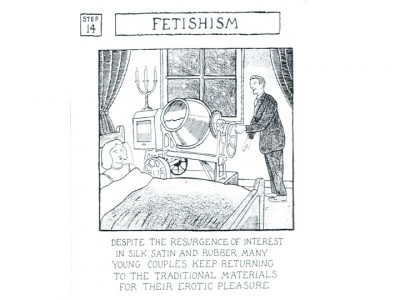 |
| The biggest editorial choice came after looking at the videos of the TV series --- which were almost entirely content-free. A segment on gender-reassignment surgery? nah, why bother, that species of surgery has been around since before I was born, and since my task was not to write a popular history of medicine, I decided I didn’t really care about the meaningful though gradual advances in microsurgery and that the real break-through --- that of a prosthetic penis that works like a fleshy one does --- hasn't happened yet. |
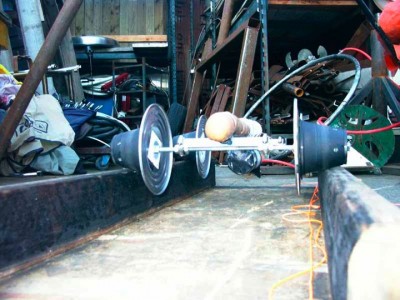 |
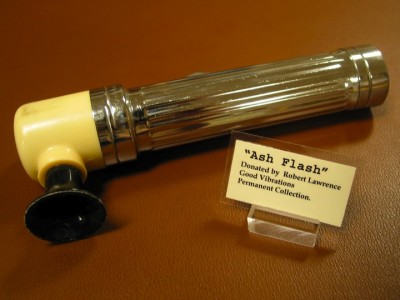 |
| Advertorials on perfumes hypothetically based on pheromones? Or on dermatologists whose make-up artistry is as good as plastic surgery in getting clients to conform to pseudo-sociobiological-cum-Hollywood models of mate-worthy superiority? I wasn't getting paid enough to do advertising copywriting. |
 |
 |
Perhaps the most confusing episode was something about Japan --- where "shopping, electronics, and sex, which characterize this society, are clearly where our future is heading". My takeaway was that the producer of the segment was enamoured of how the Japanese women (as depicted) giggled good-naturedly when being sexually humiliated, and were light-hearted about sex-motels and extra-marital affairs --- and so the producer was making a futurist social trend out of his particular kink. All I could think of was the throwback line to my life in the 80s, when I was the lowest possible editorial unit at a McGraw-Hill technical trade publication. |
 |
 |
The most important editorial choice in service of this book was the decision to not try to write an entire history of sex and technology . |
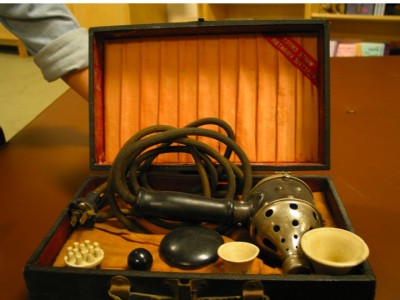 |
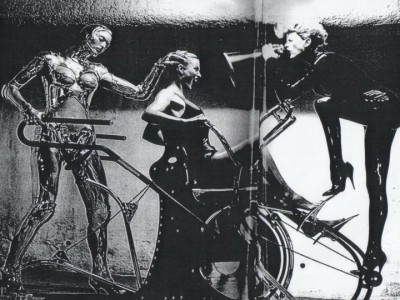 |
And in publishinglandia, a coffee-table book means around 30,000 words and around 200 images. Snapshots, verbal and pictorial, rather than an encyclopedia; sex and technology as filtered through the way we live today --- today being roughly the last five to 10 years. What would go into the book would be what I found interesting, not what I thought might be tittilating to a hypothetical someone. |
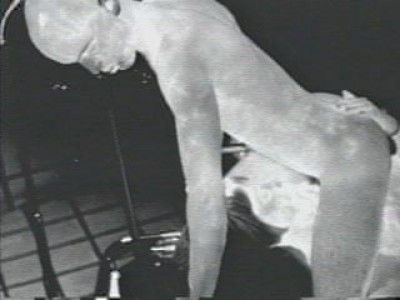 |
 |
The second decision revolved around the artwork --- concerned with not perturbing the buyers for the big book-chains; yet wanting to get into non-traditional retail outlets like Urban Outfitters; and realizing no how could a book compete with the XXX material available on the Net (that we all confront, whether we want to or not), I decided the art-work would all be rated "R" and be suggestive, not explicit. Mood art and indirection better conform to my aesthetic, anyway. As I began to do my researches, what the book would be about suggested itself, self-organizing out of chaos and nothingness.. |
 |
 |
Viagra had to be in there, because I consider it a true triumph of technology in service of sex --- for the first time ever, there exists a real-life aphrodisiac. And in delving into this topic, there turned out to be many, many interesting bits: everything from how the Church of England made a tidy $5 million from a timely investment in Pfizer to Viagra-use being strongly correlated with STDs and methedrine use (according to public-health clinics in San Francisco) to how it has led to the breakup of longterm marriages: the wife may have resigned herself to doing without sex because her husband couldn't engage any more --- but how does she feel when he discovers Viagra and turns to others for his affectional needs? Humiliated, that's how. |
 |
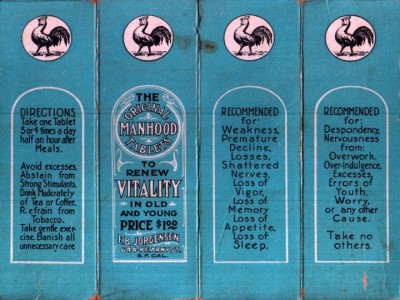 |
| And it's easy for a biochemist to tell from their structures some basic things about the Big Three Erectile Dysfunction drugs: that Levitra is obviously a copycat drug, different enough solely at the margins to get around IP issues; but Cialis, coming out of a biotech startup in part funded by Bill Gates, has the markings of a molecule assembled through computational chemistry, and is different enough in molecular architecture that it performs in better and other means that the famous blue pill. |
 |
 |
Then there was a lot to write about on the subject of hardware, variously defined. Talking to manufacturers of vibrators and dildoes led to the delightful discovery that that there were a multiplicity of issues that, well, were like consumer-products creation and engineering challenges present in most lines of business. |
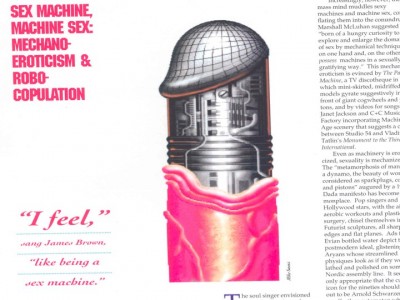 |
 |
| Tradeoffs between noise and power! Between the convenience of cordless and the reliability of the plug-in! The tension de jour between the boutique high-end domestic manufacturers and the cheap off-shore mass-producers with abysmal environmental and worker health-and-safety practices! |
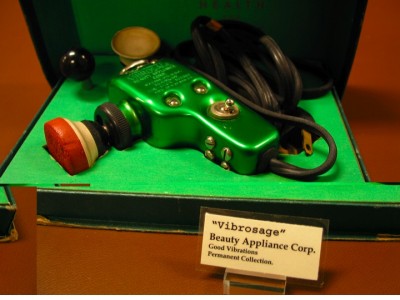 |
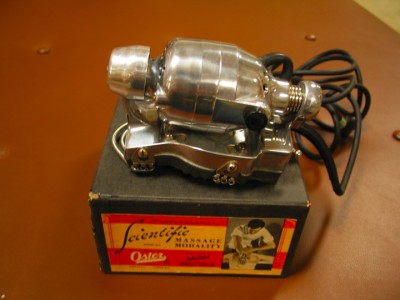 |
| The woman who popularized sparky-colored silicone dildoes talked to me about how since silicone (a more biologically inert substance than the unsavory plastics used in most sex-toys) is tricky to work with, she wasn't too concerned about cheap Chinese knockoffs of her wares. |
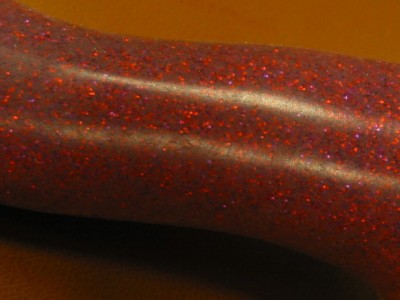 |
 |
| The same confidence in craft was expressed by the creator of Real Dolls --- the Asian knock-offs of his love-dolls don't even come close in terms of artisanal and functional excellence. On the other hand, when the dildo-maker was considering adding vibrators to her dildoes, she was torn between using higher-quality Japanese vibrators (which might adversely affect her price-points) versus el cheapo ones from elsewhere. |
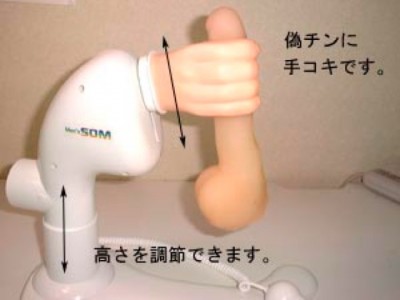 |
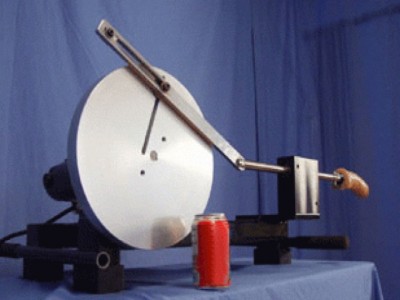 |
| In an industry that is increasingly more consumer-driven and female- (as opposed to frat-boy of all ages) driven, an emphasis on quality and durability is coming to matter --- hence the short-term domestic panic when it appeared a few years back that the sturdy classic Hitachi magic wand would no longer be distributed in the U.S. |
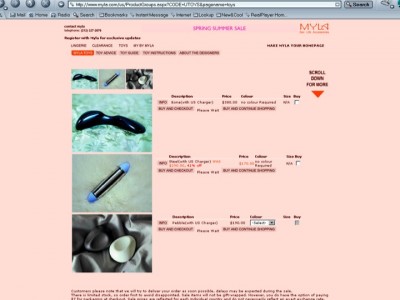 |
 |
| But as with the rest of the consumer-products industry, and the micro-electronics industry in particular, the sex-toy biz is still mostly very price-sensitive.
The classic Rabbit Pearl vibrator made more famous by Sex and the City is a harbinger of the quality-direction this branch of the consumer-electronics industry is heading in. |
 |
 |
The idea for it came from a single Japanese engineer, and was a triumph of consumer-oriented product-creation. Prototypes were tested iteratively on Japanese housewife-volunteers until the much-beloved vibrator reached its final form. Photographs were taken of the celebration of the engineer's achievement. |
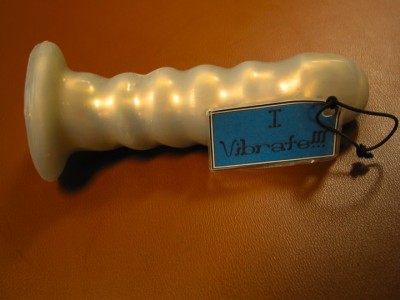 |
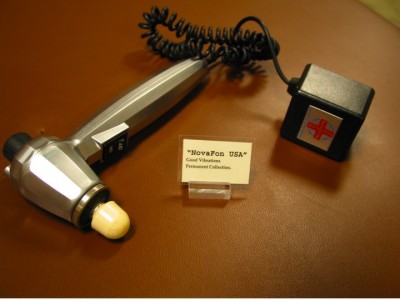 |
| Then there are the health and safety issues: pthalates, the endocrine-disrupting plasticizers now banned in general in the EU and in the U.S. from stuff coming into contact with babies, are pretty much in all sex-toys. Some of the higher-end toys, such as the Rabbit Pearl, are now coming in a pthalate-free version, akin to how some products at the grocery store are labeled "GMO-free". The problem is, as a polymer scientist at UCLA told me when I asked him some materials-science questions, is that there is no guarantee any elastomer will end up being any safer than the nasty pthalates. |
 |
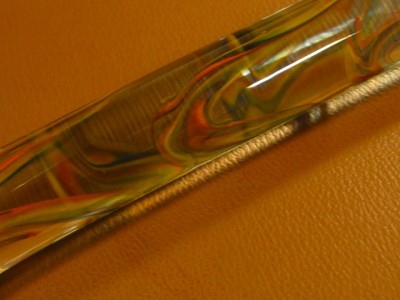 |
| And no, sex-toys are not regulated at all (they are "novelties" after all) and even though the standard warning given out at the clean, well-lighted places for sex-toys is that a condom should be used with all toys --- we know people don't even do this with their human partners, where there are the more-concrete risks of pregnancy and STDs always present --- and not the more distant ones of cancer 20 years from now. |
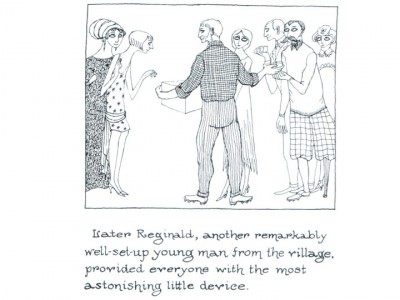 |
 |
And in practice, there’s little good that can be said about Monprene, the nasty compound that composes Cyberskin, a trendily-soft material (used most notably in the Fleshlight, a butch, industrial-looking sex-toy for men that features an aperture shaped with your choice of anus or vulva, molded in beautiful, periwinkle Cyberskin) that melts when exposed to heat, gets tacky easily and can't easily be cleaned --- and caused fires at one point in the plant where it was manufactured. It rapidly became apparent though that If I weren’t careful, the book could devolve into My Big Book of Vibrators, or a Whole Earth Catalogue equivalent for such. Boring! And not my charter. So in my attempt to diversify potential sources of useful art, I was initially drawn to the Flash Gordony four-color reproductions of CAT scans and fMRIs of brains and genitalia as these body parts go through their cycles of excitation and deflation. |
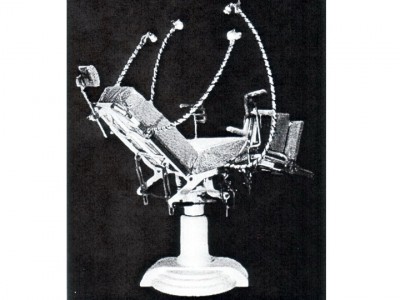 |
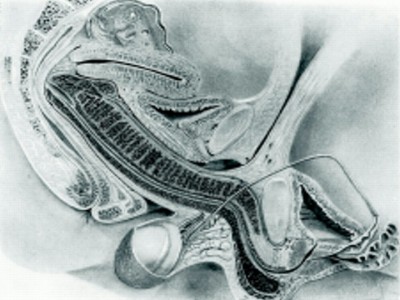 |
| But after awhile, it made sense that a book on sex and technology should actually include some texts, writing in its own right, about the nifty-keen technology-aided new research into on how sex actually works in humans. |
 |
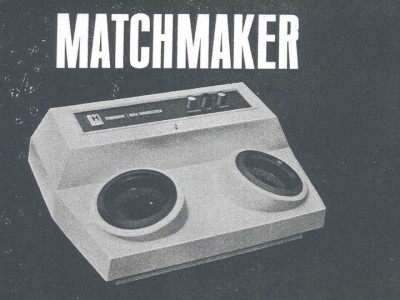 |
| I got to find out fun facts like yes, for women there likely ain't ever going to be the equivalent of Viagra, for the mechanisms of their arousals are complex and brain-centered, rather than more local and linear. I was also amused when a Stanford medical researcher, attempting to model biological patterns of arousal, remarked that it was hard to find sexually-active female undergraduates at Stanford who hadn't had at least one sexual experience with another female (for reasons of injecting reasonable controls into her study, and making sure her subjects would be aroused by the standardized visual and auditory stimuli she threw at them, the researcher needed a strongly het-tropic population). I am not sure if this says that the young women who are likely to volunteer for sex-research studies are more sexually flexible than the young men who volunteer ---- but collecting trivia like this was part of the fun of the project. |
 |
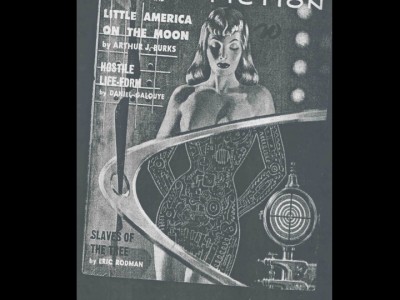 |
| There really was the old-fashioned Lisa-Lubner-like girl-nerd joy of discovery in working on the book: a case in point, it turns out women also have PDE5 throughout their genitalia, the same enzyme that in penises is responsive to Viagra. The problem is, different women have it distributed to different degrees in different areas --- which goes at least part of the way towards explaining why women can vary so wildly in terms of what gives them pleasure and what doesn't. |
|
 |
Finding out this stuff made it possible to drop into dinner-party conversations, where appropriate, authoritative-sounding mini-rants that began "let me explain why Pfizer pulled the plug on its researches to find a female version of Viagra". |
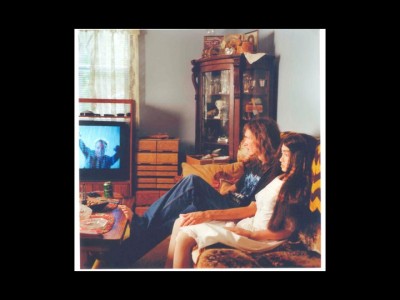 |
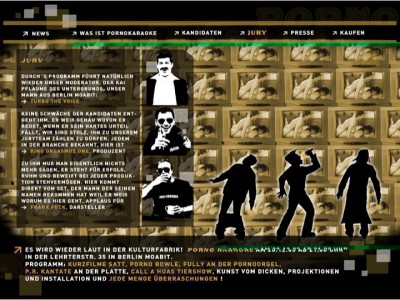 |
| But even though I was compiling what I felt was good data as no one had before , and I was definitely engaging in full-tilt intellectual rompitude, meta-questions started emerging from the murk. For one, since there was clearly so much territory here, I wondered why no one had ever written a book on sex and technology in a tone that was descriptive but not prescriptive, with an ethos of entertainment but no leering. As far as I could tell at the beginning of the project, no one had, though a few books of more limited scope have come out since. |
 |
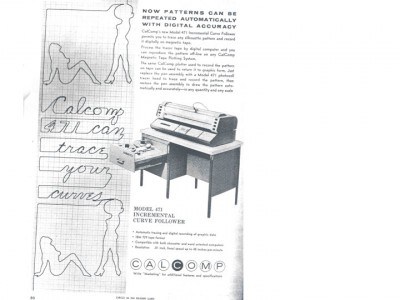 |
| The best explanation I could come up with was that most of the people who had ever written on these subjects were propagandists, advocating for sex and advocating for sex-devices --- or were writing guidebooks or with intent to arouse. In other words, their rhetoric was suasory (persuasive) or epideictic, (praising), either directly or indirectly, and not primarily forensic (telling the truth of what happened). It would be as if no one outside the automobile industry had ever written about cars. |
 |
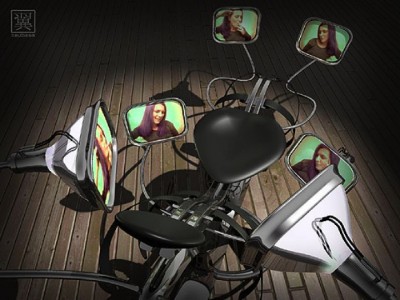 |
| The pointers provided by the folks I talked to in the sex-world were invaluable --- but to an outsider, the insistence that the Venus of Willendorf was clearly a sex-toy (ouch!) or that Neolithic objects on display in museums of anthropology as tent-pegs were clearly butt-plugs (more ouch!) was strange. Hanging out with these folks and reading the literature they pointed me to was like being around any ideologue, no matter how friendly. A Marxist, a Jungian, a member of the Christian Right: these folks (thanks be to their own special cognitive filters) always find what they are looking for in almost any human act. But being an outsider to this mechanistic view of sex that finds sex and sex-machines in everything --- and plumps for it --- at times felt like being an agnostic secular humanist around a member of Agnus Dei. The second sees abominations of or the hand of God everywhere; the first sees a world far more mundane, but various --- and often one with no trace of either good or evil. |
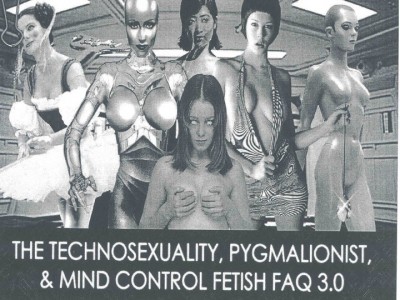 |
 |
But from my reaction against the necessity of associating a propagandist mindset with a sexually-informed mindset, came still more unanswered questions. Clearly humans have always been engineers (the hanging gardens of Babylon! the Great Wall of China! the waterwheels of medieval England!). So, no surprise, I found at the Bancroft Library photos of ivory dildoes made for the wives of merchants in 17th-century Japan and pedal-powered dildoes from the Weimar Republic. And humans have (in spite of occasional cultural fictions to the contrary) always been in favor of sex. In fact, humans are pretty much like the rest of their pals in the animal kingdom: as Susan McCarthy, author of When Elephants Weep: the emotional lives of animals and Becoming a Tiger: how baby animals learn to live in the wild says, "apes have been spotted crafting sex toys on occasion and I have a vague notion that a porcupine in the throes of longing may get improper with a branch". |
 |
 |
| So one of the unanswered question was "Why is there so little good engineering in this industry sector?", one maybe shipping somewhere close to $100 billion year ? (though who knows, because with the exception of the Spanish global porn conglomerate, Private, and the pioneering feminist sex-positive German company Beate-Uhse, almost none of the manufacturers are public companies --- and the U.S. Department of Commerce doesn't track the trade). With the exception of Real Dolls and the Rabbit Pearl, both name-brand market leaders, almost nothing struck me as solid or admirable --- with that happy marriage of form and function you can admire anywhere that good engineers or good industrial designers have given real thought to a real problem. In the realm of sex-machineries, things fall apart/look dumb/are cheesey/are noisy. |
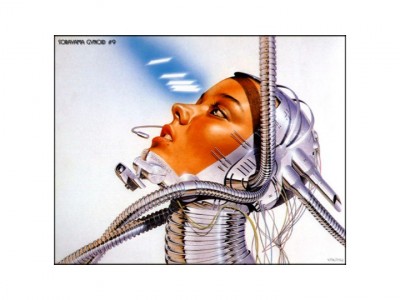 |
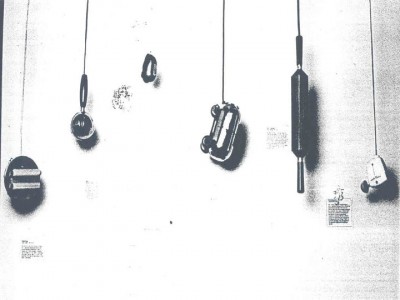 |
| Yes, there are the very-pricey arty sex-toys sold by Myla.com in England (Myla being a Brit Victoria's Secret meets Good Vibrations combo),. objets d'art designed by Philippe Starck-ish name-brand designers such as those that have their merchandise at Target, or whose furnishings for the home are featured on Queer Eye for the Straight Guy. Such things are also merchandised in the catalogues pitched at women looking to make purchasing decisions about 90 organic cotton/10 percent lycra yoga-wear imprinted with spiritual affirmations. But these highly-designed sex toys for women are mass-market luxury goods for the status-insecure, instantiations of what I call design-shmime i.e. design whose unconscious intent is to show off to other designers how fashion-forward the designers are but don't reveal deep any problem-solving mentation or ingenuity. You look at these toys and have the reaction of "Hunh? but what do they do, aside from possibly look decorative on the bedside table in a hotel room designed by Andree Putnam?" The spirit of Henry Dreyfuss or Edward Pulaski or the unknown industrial designer behind the irreplaceably wonderful Swiss Hermes typewriters of the 1960s (sci-fi writer William Gibson loves them, too) is almost nowhere in realm of sex-toys. |
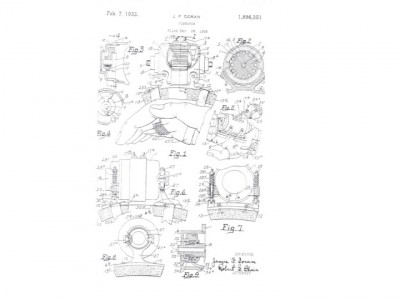 |
 |
It's damned peculiar, because it's a truism in the history of technology that sex has so often driven innovation; it’s well-known that sex-industry players fostered the use of VHS as opposed to Beta as the standard for home-video, and online-porn purveyors fostered the development of e-commerce and broadband to the home. But sex-hardware has at best trailed along behind existing technologies. |
 |
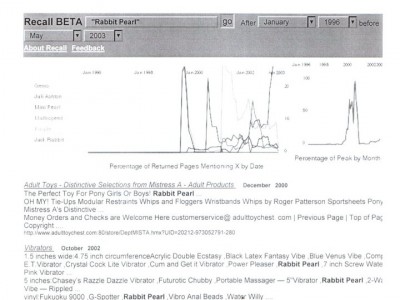 |
The widget that makes a vibrator vibrate came from the vibrator-technology that was developed to put cell-phones in their polite-vibrate mode. The "Slightest Touch", a sex-toy marketed solely for women, repackages a $5 TENS (transcutaneous electronic nerve stimulator) unit that's been around for years and is sold over the counter for folks with soft-tissue pain, such as repetitive stress injury. The gizmo works by slapping electrode pads above each female ankle --- and the unit closes the circuit somewhere in the realm of the pelvis. For some women, this heightens pleasure, no crime in that. The crime is that more than $100 is charged for the device, and it basically rebrands a technology that's been around for a long time --- and that's been known in electric-play circles for years. |
 |
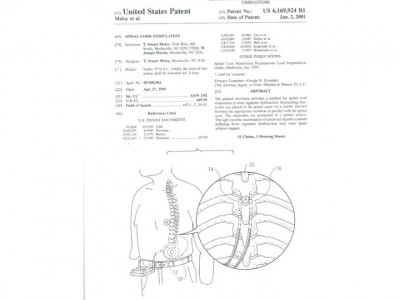 |
A more-troubling unanswered question was really about the depth and breadth of this intersection of instrumentality and sex. That this intersection has become so mainstream that Cosmo can have as one of its cover-lines a feature on "your most embarrassing vibrator moments" --- is this a function of the technology finally having caught up with basic human experience --- analogous to how modern dentistry is finally good enough to save most people's teeth, mostly painlessly ? Or is it because we live in such a technology-saturated society, one of endlessly-mediated experience, that the complexities of human sexuality are thought to be resolved simply by throwing some technology at the problem? Do we as sexual beings want to model ourselves on how automation in all its modes has diminished headcounts --- and human interaction --- in too many areas of human endeavour to count? |
 |
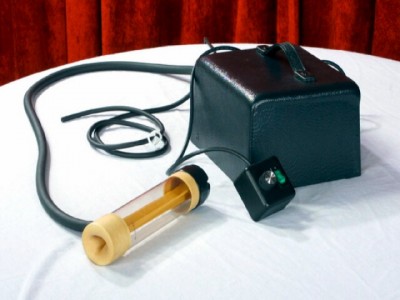 |
Intimacy is hard; unearned intimacy * as with the multiple-choice-question/database-matching aspects of online dating; |
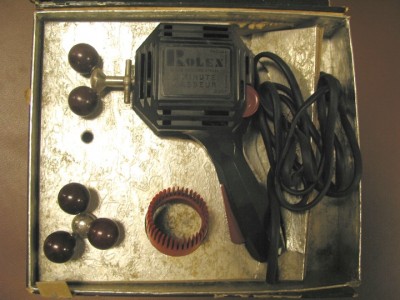 |
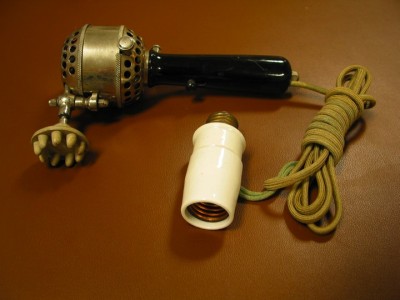 |
Emotional scaredy-catness I guess has become a la mode. Technology here, there, and everywhere is held out as the cure for incommunicativeness with or incompatibility with a partner; laziness with a partner; lack of a partner; bed-death; and a million other psychosexual trickynesses. Lumping together Real Dolls and Fucking Machines and the Thrillhammer (guys pay money to use a joy-stick to remotely manipulate a dildo being thrust into a model/sex-worker) with On Our Backs-type approved vibrators and dildoes, they all have in common a bias that the technological and repeatable is preferable to the eccentric, erratic, error-bound --- and human. Our culture at large deviates towards the whizzy, the gameboxey, microprocessor-embedded, and the synthetic --- so should our sex-lives be any different? |
 |
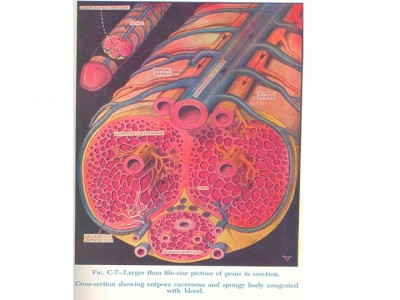 |
Evidence along these lines came in the unexpected responses I got when I asked folks (friends and professional contacts) I talked to during the course of the project to send me any images or photos they came across that might work in the book. More than 90 percent of what my friendly helpers and acquaintances sent me were BDSM domintrixy-looking leather-vinyl fetish girls. I would look at these images, and unbidden what would come to mind would be was something along the lines of "yes, but what does this have to do with 'Data Communications'?" So after thanking the people who pointed me at these images I'd ask them: “What does this have to do with sex and technology?” Where's the technology in this picture?” True, there is the well-known spike of BDSM role-playing hoohah in the geek community --- but most folks outside of high-tech don't know of that correlation. Is it that our feelings about sexuality and our feelings about technology have gotten so mashed up that they have unnaturally merged in the unconscious to a single gestalt of domination? It simply didn't make any sense --- and not to mention, it once again made the tired default assumption that the viewer/reader was a het male (or perhaps a lesbian) into power games --- thus excluding, oh, 60 percent or more of the population from the gaze. And the offerers of these useless but well-intentioned gift-images would be sheepish and speechless and not really be able to tell me why they sent me those pictures, or why they thought they were apt. |
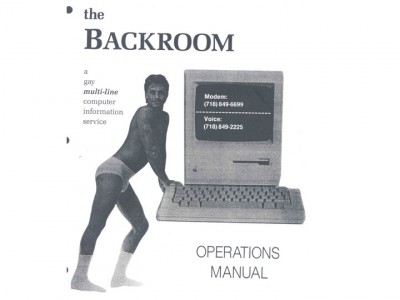 |
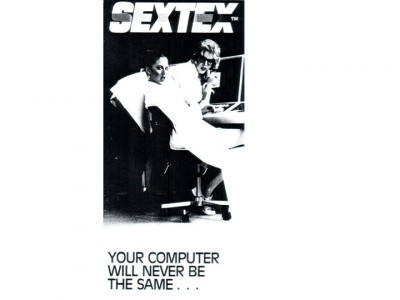 |
| This "of course" about the instrumentality/sexuality interlock forced me to confront a lot of my prejudices. Pervert that I am, I had always thought sex was about an interesting psychological exchange with another human being, and was that inner sanctum where one felt most human. But perhaps I was in a paraphiliac category of my own, and hadn't realized until I worked on the book how much in the sexual minority I was. To me, the prime directive to mechanize that most non-rational and each-time-is-a-different-thrill of human experiences didn't necessarily make sense at all. |
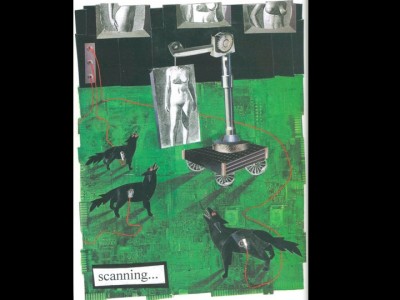 |
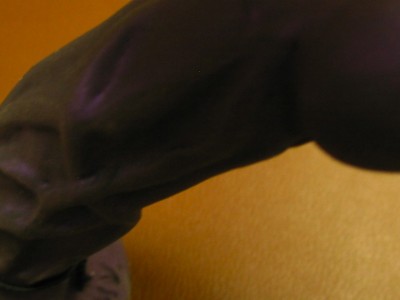 |
| As a corollary, I began to wonder how much to most folks sex and masturbation were mostly equivalent, where I had always found them to be distinctly different spheres of human activity and emotion. And as part of this discombobulating inquiry into the idea that “maybe everything I thought I knew about sex is wrong”, I also began to wonder if perhaps the experience I had thought was a human universal --- that with some sex partners and in some contexts, no matter what is essayed, nothing enjoyable is going to take place; yet with other partners or in some other contexts, it takes little more than the stroking of a cowlicking eyebrow for uproarious good times to ensue --- was not what everyone else felt, too. That is, maybe extreme sensitivity to original conditions wasn’t a common denominator in human sexuality --- although I had always thought it was. |
 |
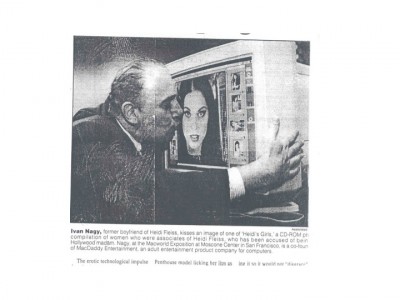 |
Another troubling question arose, one that assaulted what I would call my aging Berkeley feminist orientation, and at times would make me feel that I was linking arms with sister-spirits Andrea Dworkin, Camile Paglia, or Catherine Mckinnon --- a sorority I have never wanted to join. And what I mean by aging Berkeley feminist orientation, it's a mindset that says |
 |
 |
 |
|
But as I kept on doing my research, I kept on having the nagging feeling that what might be considered the worst of guy-like behavior in the stereotypical sense (an emphasis on tools and rules and things that can be regularized and an avoidance of the psychological and interpersonal --- so technosexuality, a paraphilia of folks fantasizing about sex with androids/robots/Stepford wives is, according the fellow who runs the master Technosexuality website, a pre-occupation that attracts a population more than 90 percent male...) was being potentiated. |
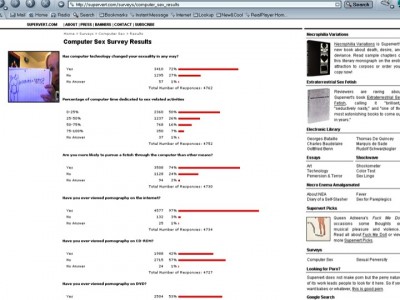 |
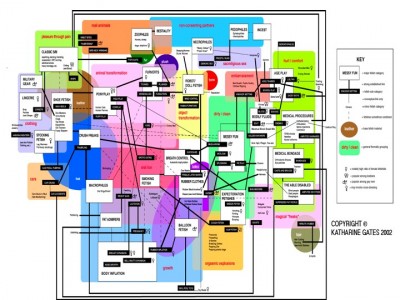 |
There's that song "Dance 10, Looks Three" from A Chorus Line where the dancer mourns her being not only reduced to a number, but being judged far more on her tits'n'ass than her skill. I was similarly creeped-out by what I took to calling online Zagat-guides to escorts: that is, websites where all body parts, participation in, and skills at, sexual activities, and emotions (did she give you the girlfriend or honeymoon experience? Was she friendly and outgoing? Did she give good conversation?) were given numeric rankings. |
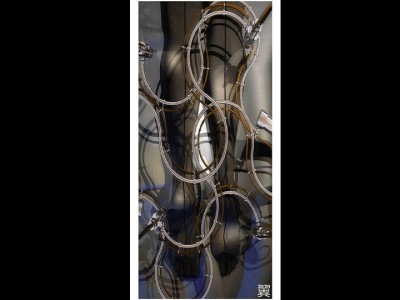 |
 |
| The women were truly being reduced to the kinds of product-comparison charts you can find in Consumer Reports --- conveniently ignoring what one person finds beautiful or erotically engaging will leave another cold. But the pervasive idea that sexuality can be reduced to numbers and technique, or the well-worn trope of women being like cars, or like machines that can be hacked so that they'll put out (the"Player"/"How to Pick up Girls" ickinesses) --- with all due respect to Donna Haroway's Cyborg Manifesto, about how none of us ain't natural humans any more anyway, it was hard to shake the impression that the canonical worst parts of one gender were being nourished, picked up on, and spread out culture-wide |
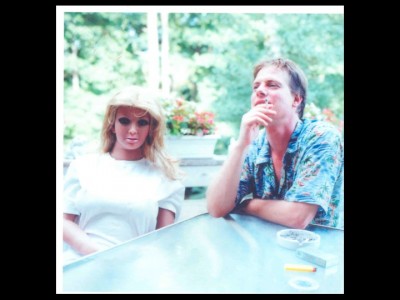 |
 |
| When I worked around the fringes of the corporate world of the 80s, it was the era of power-suits and dressing for success and Games Your Mother Never Taught You and women truly feeling they needed to not be like women in order to get on in the big bad world of business. Now, things in the business world are both more fluid and as bad as always (think Maureen Dowd and Larry Sommers) --- but it was always troubling to me to that what we consider to be unpleasantly cliched male-behaviors were what one had to ape in order to get on |
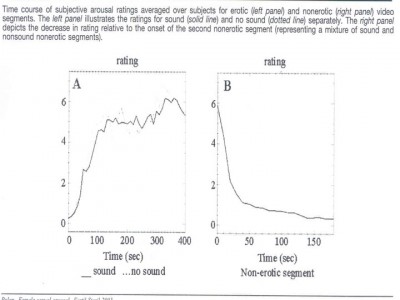 |
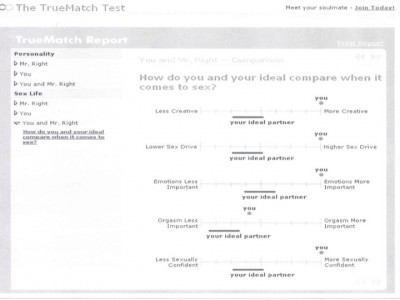 |
| Porn, for example, is so pervasive on the Web it's almost not worth remarking on --- and the Web and the Net have made it so much a default part of our lives that I don't even have that much of a startle-response any more when I get spam that consists of solicitations for kiddy porn or feature doing violence to women. The recent books Female Chauvinist Pigs: Women and the Rise of Raunch Culture and Pornified: How Pornography is Transforming Our Lives, Our Relationships, and Our Families talk about in part the deleterious effects of pervasive Net porn on het relationships: how it changes for the worse how these porn-philic men view their partners and their relationships with their partners. |
 |
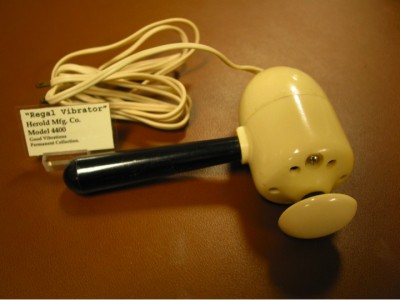 |
"I don't see that any man who loves porn can think that actual sex is better, at least if it involves the crap that goes along with having a real live female in your life". Men who belong to the Real Dolls users group say similar things. Depersonalization and the removal of unsettling human complication are the default orders of the day --- and it makes one uneasy to consider how both advances in technology --- and technophilia --- aren't exactly pro-woman. I can't buy that engaging in sexual competition with a screen-fantasy, or turning yourself into an object (unless doing so is of particular erotic interest to you), or holding up as a beau ideal the vaunted endless variety but ultimately repetition-compulsion monotony of porn --- is a feminist ideal, however you define feminist. |
 |
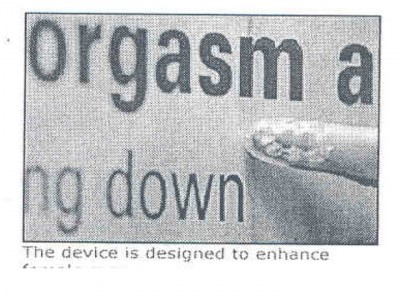 |
But looking beyond porn, particularly with paradoxical civil-liberties issues it raise for a hardcore free-speech nut like myself, and musing on just what was bugging me in the world-view I was being exposed to day after day in my researches, I conducted what my homie Wittgenstein might call a thought-experiment. |
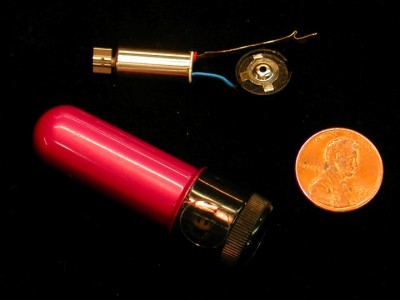 |
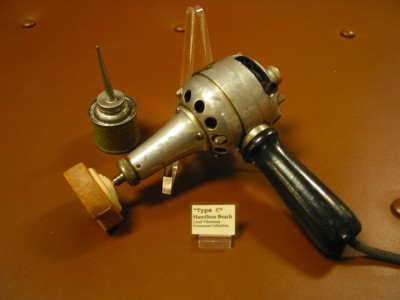 |
| Imagine, if you will, what it would be like if technology were enabling what might be considered the worst of stereotypical female behaviors. Let's say the collecting of white-wicker doll-house furniture and the owning of pictures of kittens were considered necessary courtship-rituals for het men, and that there was a forced collective cultural acceptance of the Harlequin Romance or the Bodice Ripper as the model of ideal relationships. And all men were expected to look and act like a mixture of Fabio and Ashley Wilkes, and spend all their time at work pondering new opportunities to spring nosegays of violets on their mates, and should weekly take time off on their lunch-hours to accompany their mates on shopping trips to Bergdorf’s (Platinum Amex in hand) and write long poems and letters processing their feelings towards their mates ---- who were stay-at-home moms with four kids, a nanny, a maid, a personal assistant, and an active life as a social-climber. Our imaginary males technology-enabled-for-females would gladly convert their home workshops into studios where their mates could work on their scrapbooking, and would be ecstatic to crawl into bed every night in room filled with pink ruffles, stuffed animals, dolls, sachet, potpourri, and lacey throw pillows. |
 |
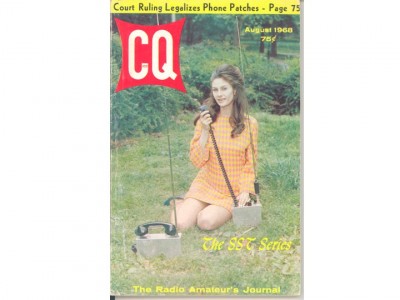 |
These male-avatars would make a kazillion dollars per year but would always be home for all possible familial-demands, ranging from middle-school piano recitals to playing gardes-manger at their mate’s in-home fundraising teas. And oh, they would never dream of taking vacations without the kids and their mothers-in-law, preferably to locales where one of their mates’ siblings live. These figments of the female emotion-porn imagination would have no say in the rearing of the kids but would be expected to contribute to 1/2 of the domestic duties after having written all the checks for the household. |
 |
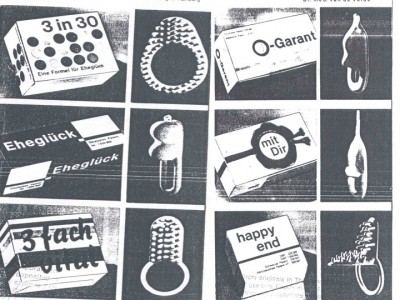 |
Scary, eh? Sociologist Philip Slater prophetically talked about the depersonalizing addiction to technology in his classic 1970 The Pursuit of Loneliness, and so did E.M.Forster (yes, that E.M. Forster) in his 1909 sci-fi short story "The Machine Stops" --- "men seldom moved their bodies; all unrest was concentrated in the soul". There is really little new in this critique of technology --- that it can lead to atomization and balkanization, that it kind of caters to a fear of the intricacy of human inter-relationship --- but it was kind of stunning to observe how readily it had penetrated a broader cultural sensibility about sex . Which in my strictly myopic bigoted opinion is exactly yummy, rich, and creamy precisely because it is multivalent, undefinable, and so deeply unalgorhythmic. And personal. |
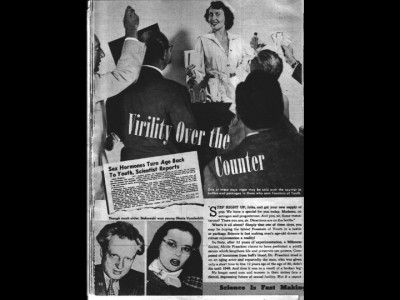 |
 |
To me, the technik-uber-alles attitude towards sexuality gives off vibes as upsetting, toxic, and crypto anti-woman as say, the left-over Freudian attitudes of another decade, where, where in speech-acts worthy of homicidal attack by Kate Millet, the esteemed psychoanalytically-oriented culture critic Ernest Becker could write his Pulitzer Prize-winning The Denial of Death (featured to comic effect in a 1970s Woody Allen movie) about how a male fears the power of his mother and by extension all women because he never gets over thinking what a witch she is after seeing his first toilet-bowl of menstrual blood, and of course women have penis envy because all they can create is a dead inert stool in contrast to a vibrant, life-affirming erection. I don't know what kind of homelife Becker had as a child, and I probably don't want to know --- but to me, his early 60s-feminist-backlash fantasy rationalizations were just that: bunkum in defense of social-structures that were female-unfriendly. |
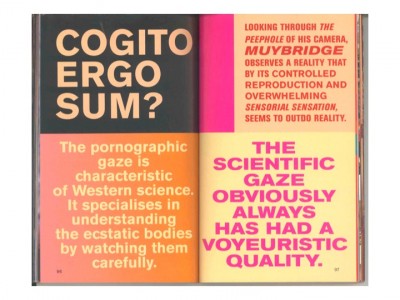 |
 |
I am always wary of justifications for what appears to be attacks on our finer feelings and are trumpeted as the way things really are and/or statements of progress that are so often so curiously anti-woman in the traditional sense. It's just dismaying how in each new generation, there's an au-courant cultural iteration bent on diminishing women, as in the 80s, it was aerobics that was the new corset. There were many days after working on the project I felt a) I never wanted to have sex again; b) if I did have sex again, it couldn't be with a guy, because they were, as a group, frightening and Other not in a good way; and c) I'll never find anyone to have sex with because clearly my fuddy-duddy humanistic model of sex --- that it's about intimacy --- marked me as a six-sigma freak out of tune with the larger culture. |
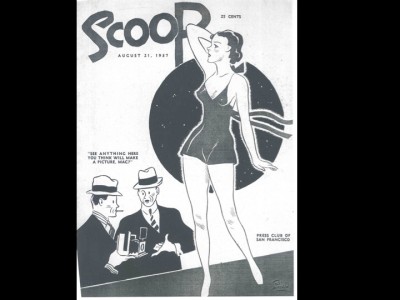 |
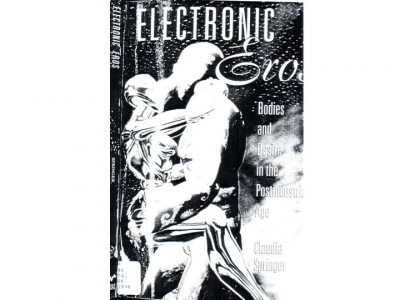 |
I also knew that the troubling questions the research was raising could NOT be put in the book --- it was, after all, to be a fun coffee-table book, and unlike my previous book, was not intended to throw me once again smack into argument-culture and provoke debate and name-calling. Controversy doesn't necessarily sell books, in spite of what you hear, and is exhausting for the unintentional creator of it. I did have folks tell me they did want to read what in a sense would have been the outtakes/director's cut of the book; that is, they were interested in what conclusions I had really come to through the researches. And that’s what this Chautaqua lecture tonight is for. But, as I kept on telling these friends and acquaintances who did seem interested in the “Behind the Music”/the making of the coffeetable book “Wired For Sex: Sex, Technology, and the Way We Live Today”, there is no market for such writing and I am NOT a blogger and after having been the loyal opposition/house-critic for technology culture in the 1990s, I wasn't interested in recapping that role. The paradox I couldn’t resolve --- and that I still can’t as I stand here today --- is how to reconcile the exuberant animal nature that leads to homo faber and homo ludens --- which always likes to make stuff, and damned straight also likes sex --- with the sense that there is something currently going on that is out of whack, extreme, and pushing us to accommodate ourselves to machine epistemologies --- what elsewhere I termed “the software way of knowledge”. So what are my net-net/bottom-line/end-of-the-day conclusions about what I learned from the project? They are Any questions? |
|
Formatted for the web by Andrew Foehner of User-Friendly Computing May 2009
Santa Cruz CA